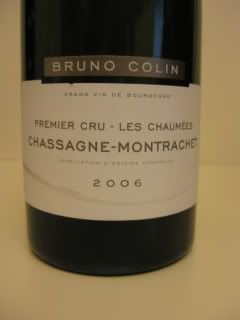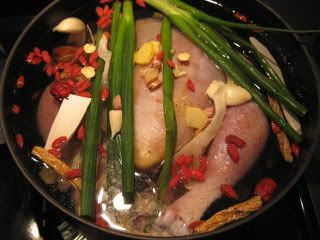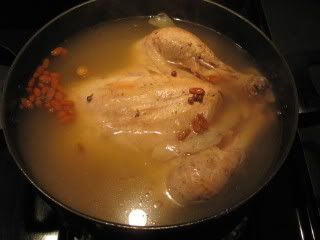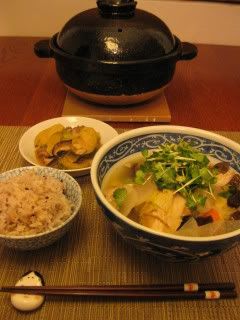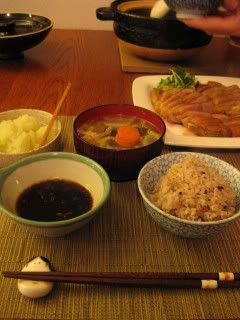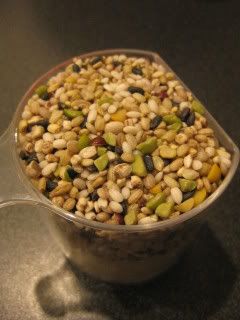
This is a great party dish, as it's easy to make the big portion with the simple preparation.
This time, I made it with the pork butt, but you can also make it with the pork belly. The key is to finish it in the oven with the yuzu-cha (yuzu jam).
Ingredients
3-4 lbs. Pork butt
salt and pepper
1C sake or Chinese rice wine
water
3-4 ea. scallions (green part only)
3 ea. garlic cloves
1-2 oz. ginger, peeled and sliced
1 tsp. black pepper corns
1tsp. Szchechuan pepper corns
(Sauce)
2C braising liquid from cooking the pork
3 tbsps. sake or Chinese rice wine
2 tbsps. course brown sugar
3-4 tbsps. soy sauce
2 ea. star anise
1/2 tbsp. fresh sansho berries (optional)
yuzu jam
scallions (bottom 5"), sliced thin
shiso leaves, sliced thin
Japanese karashi mustard
Procedure
(a night before)
season the pork (all sides) with salt and pepper and rub well. Cover and let it rest in the fridge overnight.
In a large pot, sear the pork (all sides) at medium-high heat.
Deglaze the pot with 1C of sake and add the water. The water should barely cover the surface of the meat. Bring the pot to a boil, reduce the heat to low. Skim if necessary. Add the garlic, ginger, and peppercorns. Cover the top and braise the meat over low-heat for 2.5 hours.
Remove the meat, cover with the foil and cool it down.
Strain the braising liquid (stock).
To make the sauce, combine all the ingredients for the sauce in a sauce pan and let it reduce to half over medium-high heat.
45 minutes before the serving, rub the yuzu jam on the top of the meat. Put it in the 375F oven (uncovered) and cook further for 30 minutes. Remove the meat from the oven, cover with the foil, and let it sit for 10-15 minutes. Serve as big blocks or sliced with the sauce. Serve with thinly sliced scallions, shiso leaves and Japanese mustard.

You can prepare a variety of yummy dishes with the leftover pork and the stock you made (if there is any!).
The other day for lunch, I made Cha-Shiu Mein. You can simply season the broth with the salt and pepper (plus the reserved lard - pork fat if you like) and serve with the Chinese egg noodle with the topping of sliced leftover pork.
It's such a simple preparation, and the taste is amazing!





